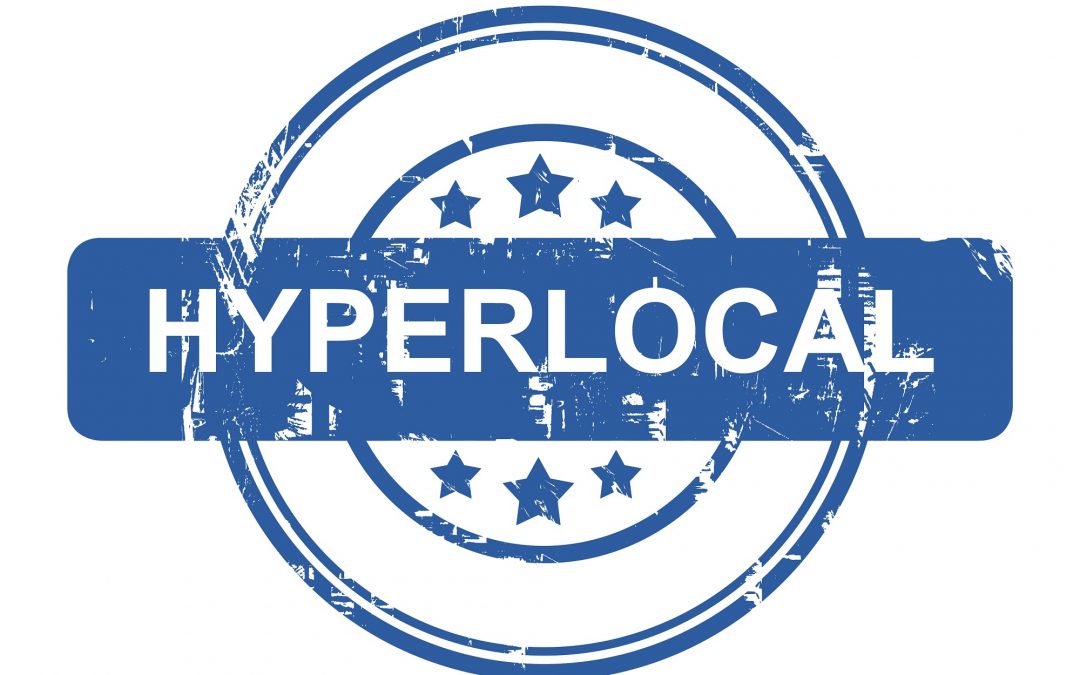Written By Merrell Sheehan
Hyperlocal marketing has been with us for decades in multiple forms: yellow pages, billboards, direct mail, newspapers, and numerous other mediums. Today, consumer mobile adoption has created the “perfect storm” for Main Street small business success. In this age of the Internet, GPS and QR codes, small business CEOs can easily leverage some sophisticated digital marketing tools to reach local audiences, build awareness neighborhood by neighborhood, and make the most of a limited marketing budget.
The buzz in big box retail marketing circles is about hyperlocal marketing … something that is very tough for a large retail chain to execute, but – with the right digital tools – an extremely effective marketing strategy for the small businesses CEO. Hyperlocal marketing is using focused marketing efforts targeted for a community within a local geographic location. The main goal of hyperlocal marketing is to connect with people close by and turn them into repeat customers due to their proximity to your business location.
In his Think With Google article, Matt Lawson, Google’s director of search ads marketing, states, “We want things right, and we want things right away. As a result, the consumer journey looks markedly different than it did just five years ago. Instead of a few moments of truth, it’s a series of ‘micro-moments’ when we turn to mobile to act on a need.” Turning to our smartphone for hyperlocal information has become second nature. Google searches involving ‘near me’ have nearly doubled since last year as people make purchase decisions on the move.
Gone are the days when brand building was a game for big bucks. Today, with hyperlocal marketing , even mom and pop retailers, with limited marketing budgets can establish their brand among their target audience and drive new and repeat customers in to their stores. Getting started with building your small business’ hyperlocal marketing strategy is easier when you leverage the tools and experience of a technology partner who has expertise in working with small business retailers. Let’s discuss four cost-effective digital tools that should be part of your hyperlocal marketing mix:
Mobile Device Loyalty Programs
The future of loyalty programs is not in plastic cards or even keyfobs, for that matter. Nope, the future lies in retailer-branded mobile loyalty programs that will allow consumers to get their rewards and a much much more. For the consumer, there’s the convenience factor – your loyalty card is with you at all times. Now a days, who doesn’t panic when they leave the house without their phone? For the retailer, you can drive higher engagement and encourage program members to redeem more offers and even get your brand on your customers’ phone home screens.
Mobile app loyalty programs combined with close to ubiquitous consumer smart phone adoption has created this “must have” tool for the small business retailer. Consumers have been trained to check-in on apps like foursquare and Yelp and amazingly it is the gamification aspect that seems to encourage this behavior, since there are little if no rewards ever received. The new breed of small business mobile loyalty solutions leverage this gamification behavior and tie-in rewards and messaging to achieve significant repeat business and increased revenues.
Today’s best mobile loyalty solutions leverage beacon technology, push messaging, geo-location, and social media integration to accomplish results that were previously unattainable for the small business retailer. Membership sign-up can be jumpstarted with personal invites to an existing customer email list and/or invitations pushed to social media followers. Repeat business drivers like welcome rewards, birthday rewards, visit reminders, and Facebook check-in rewards motivate customer to come back and inexpensively do wonders for branding.
But the real beauty for the small business retailer adopting a good mobile loyalty solution is simplicity. “Set & Forget” allows the hurried small business CEO that already leads a day long schizophrenic existence of managing his business to not have to add another task to his daily chores. A good mobile loyalty program just works and results in a significant increase in repeat business. Also, hardware requirements and WIFI connectivity do not matter since all digital communication takes place through the app on the customer’s phone.
Responsive Websites
I wonder what sort of device you’re reading this on? A laptop? Maybe an iPad while you’re sitting on the couch multi-tasking with your TV and mobile device? Or perhaps even more likely you’ve got a smartphone in your hand, and you’re thumbing through information before your store opens for the day.
Since more local searches are being conducted through mobile devices, your company’s website should also be optimized for mobile devices. That means creating an experience specifically for mobile, and not a mini version of the desktop site. A mobile optimized website has pertinent information readily available that buyers want to see when they access your website from a mobile device. If a potential customer has to pinch, squeeze and swipe too much, chances are they’ll move on. Your website is your “home base” so if it is not mobile responsive get it updated ASAP.
Social Media
Social media has come to be one of the most essential hyperlocal marketing techniques for small business retailers. Although it may be difficult to establish a direct relationship between social media and in-store sales, few would deny the influence that it bears on consumers’ purchase decisions. Use your social accounts to offer your followers a peek into your business. Offer your social media followers exclusive deals. If you are an expert in what you do post your expertise through articles on your social properties. There are lots of creative ways to deliver hyperlocal engagement through social media … and it’s free to get started.
Make sure to monitor your own social media profiles and thank customers for positive feedback as well as respond to negative comments and try to resolve issues offline. Also, some of your best competitive information can be found by monitoring what your competitors are saying through their social channels. For the busy small business owner there are cost-effective tools that will consolidate all your social chatter in a single view making it easy to stay on top of things … and some even aggregate everything your competitors are saying too.
Local Directories
You should pay close attention to your business profiles listed on Yelp, Google My Business, and Bing Places. Make sure they are accurate, add additional business details, and claim them as the business owner. They are prioritized by the search engines and will be seen frequently on local searches. I don’t know about you, but when I am in the mood to eat out Yelp is the go-to app for me.
Just twenty years ago, when we first started figuring out the digital landscape, there were no tools. Sending 500 emails was a cumbersome process, and having a website was a little like having a classic European sports car … rare, expensive and difficult to maintain. In 2016 digital marketing tools tailored for the small retailer are out there. A good technology partner will assist you in stitching together social media chatter, cookies, email addresses, mobile IDs, location data and other identifiers, to create a powerful hyperlocal marketing machine.

